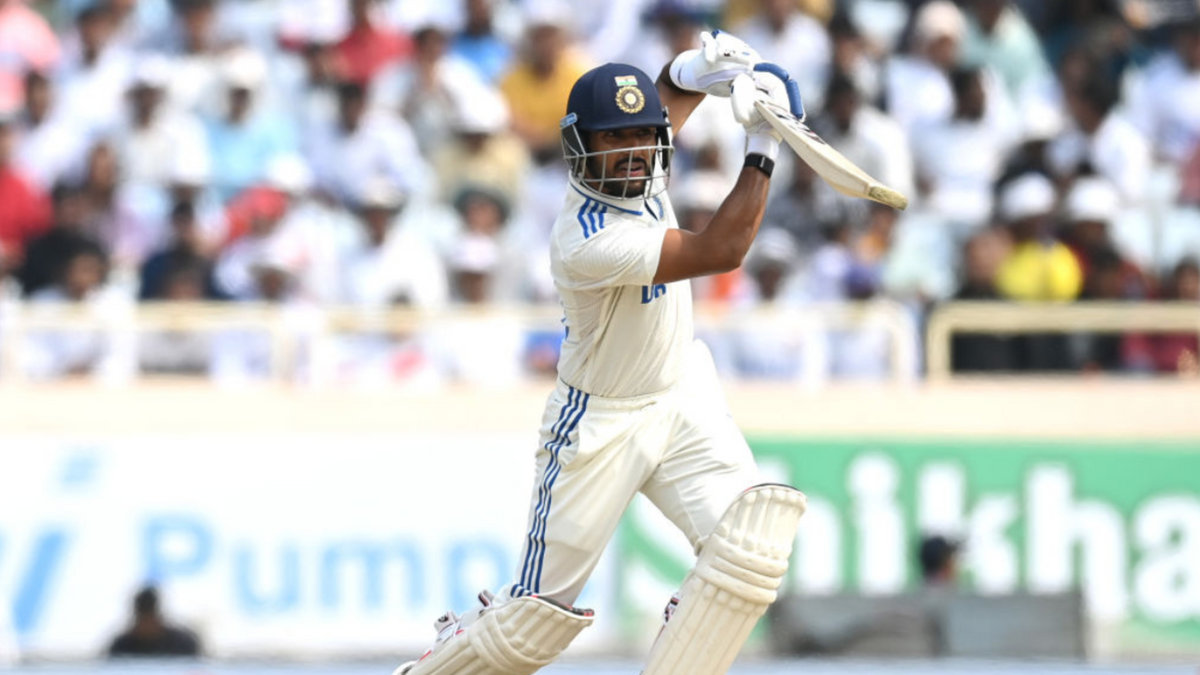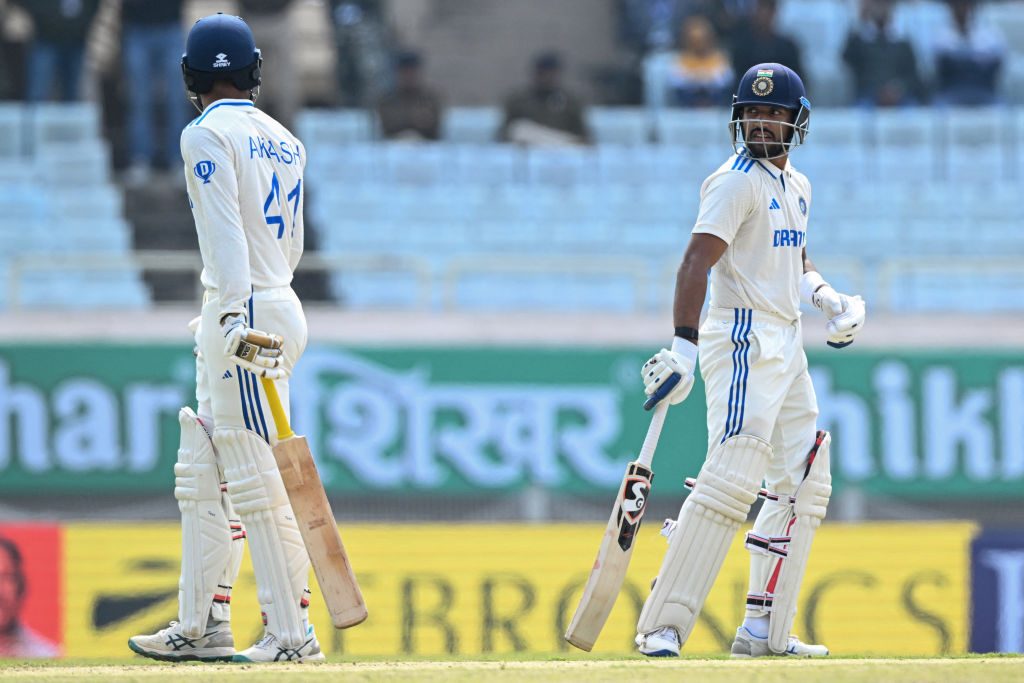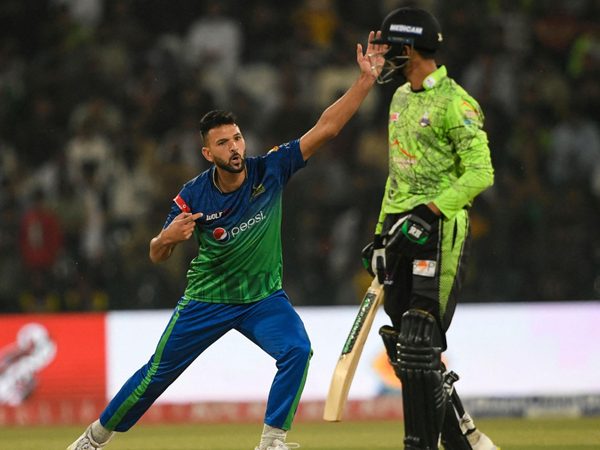
Pushed into a corner in the first innings, Dhruv Jurel brought India back in the game with a gritty 90. All of 23, Jurel’s knock proved that he is ready to be among the big boys, writes Naman Agarwal from Ranchi.
Subscribe to the Wisden Cricket YouTube channel for post-match analysis, player interviews, and much more.
“Yeh aajkal ke bacche (These kids of this generation)”, read the caption of Rohit Sharma’s Instagram story after India’s victory in Rajkot, referring to the performances of Yashasvi Jaiswal (aged 22), Sarfaraz Khan (26), and Dhruv Jurel (23).
Rohit Sharma's Instagram story for the young bloods of the Indian team.
– Captain 👏 pic.twitter.com/F9WXznHyIH
— Johns. (@CricCrazyJohns) February 19, 2024
Jaiswal and Sarfaraz stole the show with their batting in the third Test. The former had scored his second successive double hundred, while the latter scored fifties in either innings on debut. Jurel, also on debut, had gone slightly under the radar despite scoring 46 and putting up a solid display of wicketkeeping. On the third day in Ranchi, he finally had his moment in the sun.
After throwing away an advantageous position early on the first day, India allowed England to stack up 353 before slipping to 161-5 in the first innings, bringing Jurel to the crease. When two more wickets fell and India slipped to 177-7, exactly halfway behind England’s total, on a surface which was changing its nature by the hour, it spelled doom.
Jurel ascension to the back-up wicketkeeper’s position over several more experienced domestic options before the series was a surprise. With an experience of only 15 first-class games, he was given his maiden Test cap in Rajkot after KS Bharat had failed to inspire confidence with the bat in the first two Tests.
Having impressed in age-group cricket with the bat, Jurel had shot to limelight after making a surprise debut for Rajasthan Royals as a finisher in IPL 2023. A good IPL, coupled with strong domestic performances put him in the selectors’ radar as he earned an India A call-up for the South Africa tour last December. Bagging a duck in the first game, he came back strongly to score 69 in the second against an attack that had Duanne Olivier and Bjorn Fortuin.
The jump from any level to international cricket, however, is a steep one, particularly when you’re this young. And if you’re tasked with rescuing your team in a home Test with the series on the line in just your second game, you’d be forgiven for crumbling under the pressure of expectations. Jurel, though, didn’t need any forgiveness.
When he hit Shoaib Bashir, India’s tormentor-in-chief on day two, for a six down the ground late in the evening, it indicated that he might be letting his naturally aggressive instincts take over and like almost every young batter these days, looking to counter-attack his way out of trouble. But the compact defence and the eleven runs scored off the next 29 balls he faced before stumps on day two, showed that there is a well-roundedness about his game.
“No one is naturally aggressive,” Jurel said after play on the third day. “You must have seen me [play aggressively] in the IPL, but that was the demand [of the situation]. I can’t defend when the team needs 35-40 off 15 balls. Here the situation demanded me to bat long and I can’t do that by constantly hitting, can I? There’s risk involved. I just tried to spend time on the wicket.”
Those are not only wise words, they also speak to an impressive range of skills and an immense belief in your own abilities to be said out loud. Jurel clearly has both.
On the third morning, he took his time to get his eye in as England started with Ollie Robinson and Bashir. With his UP teammate Kuldeep Yadav by his side, Jurel ticked the strike over as the visitors, for some reason, allowed easy singles to be taken.
Jurel reached his fifty (off 96 balls) in the 90th over of the innings with a push towards mid-on off Tom Hartley. Just as Kuldeep grew more and more confident at the other end and India started harbouring hopes of potentially overhauling England’s score, the wrist-spinner played a James Anderson delivery onto his stumps.
Still exactly 100 runs away with only Akash Deep and Mohammed Siraj for company, the onus of scoring was now completely on Jurel. To go with that, he had to nail one of the tougher arts in cricket: batting with the tail. Jurel didn’t have to look far for inspiration. MS Dhoni, whom he idolises, used to be an expert in situations like these, giving his partner the confidence he needed while at the same time farming most of the strike and unleashing the big shots. Jurel did just that.
Deep was regularly given one, if not two balls to face per over as England kept fielders on the boundary for the first four balls. When he got the ball in his radar, Jurel would go big and importantly, go straight. “The bounce was low, so the runs stop square of the wicket. The straighter you play, the better it is. That’s what I was trying,” Jurel said after play.
[caption id=”attachment_605482″ align=”alignnone” width=”1024″] Dhruv Jurel and Akash Deep communicated well to add 40 runs for the ninth wicket[/caption]
Dhruv Jurel and Akash Deep communicated well to add 40 runs for the ninth wicket[/caption]
31 of the 40 runs Jurel and Deep added for the ninth wicket came off the wicketkeeper’s bat. Nearing what would have been his first Test hundred, Jurel was finally undone by a sharp turner by Hartley that pitched on middle and leg. By then, however, he had brought the deficit down from 176 when the seventh wicket fell to a much safer-looking 46. R Ashwin and Kuldeep Yadav then ran through the England middle order to bowl them out for 145, keeping India’s target down to under 200. If not for Jurel, that number could easily have been beyond 300.
Youngsters coming in and performing well is not new. But the circumstances around Jurel’s knock make you believe that he is mature and skillful beyond his years. With a base that allows him to go from 15-ball 34s in the IPL to 149-ball 90s in Test cricket, and a calm head that allows him to withstand extreme pressure at just 23 years of age, a long and bright future awaits Jurel.








